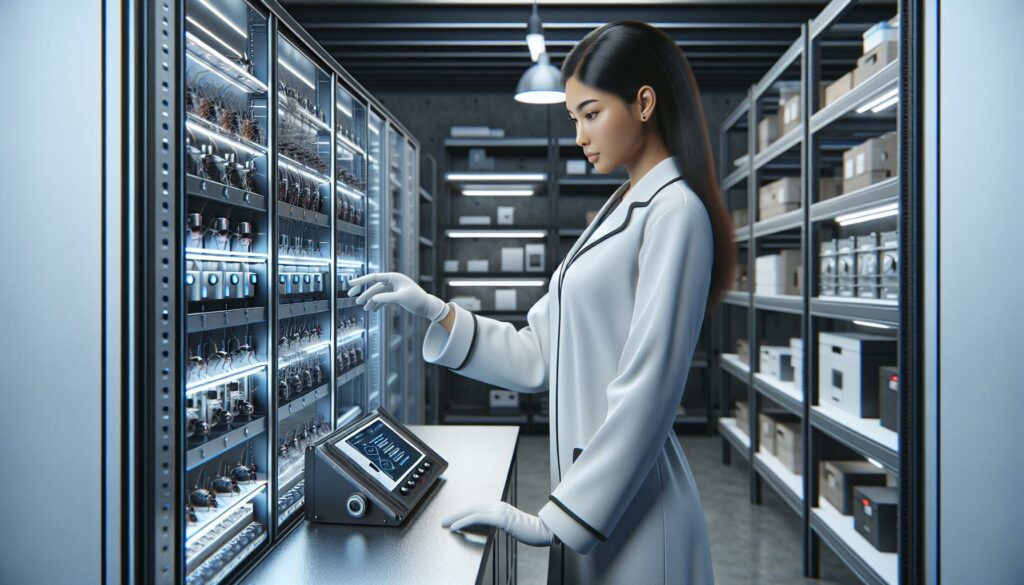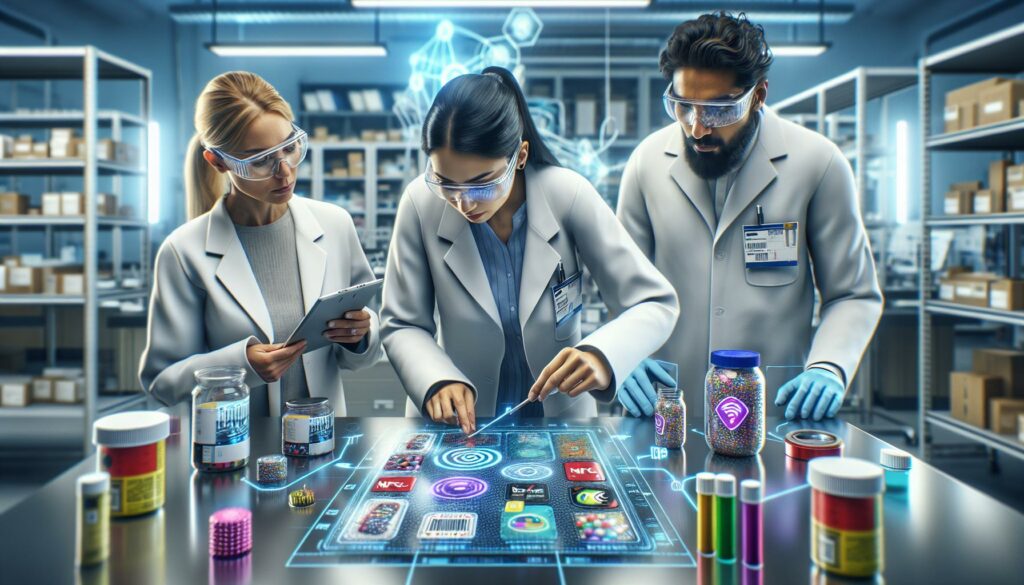”
As a home automation expert, I’ve witnessed a remarkable transformation in how we deal with household pests. Gone are the days of traditional mousetraps and toxic sprays. Today’s pest control solutions leverage cutting-edge technology to create safer more effective ways to protect our homes.
I’m fascinated by how smart sensors IoT devices and AI-powered systems have revolutionized pest management. These innovative solutions not only detect and eliminate unwanted visitors but also prevent future infestations through predictive analytics. From ultrasonic repellers to remote-monitored traps modern pest control methods offer eco-friendly alternatives that work around the clock to keep our living spaces pest-free.
Key Takeaways
- Modern pest control has evolved from traditional methods to incorporate smart sensors, IoT devices, and AI-powered systems for more effective pest management
- Smart monitoring systems use advanced sensors and cameras to provide 24/7 real-time pest detection with 95% accuracy, compared to 65% for traditional methods
- Electronic pest repellents utilize ultrasonic (20-65 kHz) and electromagnetic waves to create pest-free environments while remaining safe and energy-efficient
- AI-powered traps achieve 99% accuracy in pest identification and capture, featuring self-cleaning mechanisms and automated bait dispensing systems
- Integration with smart home platforms enables automated scheduling, voice control, and mobile notifications while maintaining secure 128-bit AES encryption
- Future developments include nanotechnology, quantum sensors, and biomimetic solutions that are expected to provide up to 99.9% detection accuracy by 2025
Hi-Tech Pest Control
Advanced digital solutions transform pest control through integrated systems combining artificial intelligence, IoT sensors, and data analytics. These technologies enable precise pest detection, monitoring, and elimination while minimizing environmental impact.
Smart Monitoring Systems
Smart monitoring systems use advanced sensors to track pest activity 24/7 across multiple locations. These systems incorporate motion detectors, infrared cameras, and environmental sensors that collect real-time data on temperature, humidity, and pest movements. Connected devices automatically alert property owners through mobile apps when detecting unusual activity, allowing for immediate response to potential infestations.
Key components of smart monitoring:
- Thermal imaging cameras for detecting heat signatures
- Motion sensors with 360-degree coverage zones
- Environmental monitors tracking moisture levels
- AI-powered image recognition for pest identification
- Cloud-based data storage for historical tracking
IoT-Enabled Pest Detection
IoT devices create interconnected networks of pest detection points throughout buildings and outdoor spaces. These smart devices communicate with central hubs to provide comprehensive pest surveillance and automated responses.
Detection capabilities include:
- Ultrasonic sensors detecting movement in walls
- Pheromone monitors identifying specific pest species
- Smart traps reporting capture data in real-time
- Wireless mesh networks covering large areas
- GPS tracking for pest migration patterns
| Metric | Traditional Methods | IoT-Enabled Systems |
|---|---|---|
| Detection Speed | 2-3 days | Under 1 hour |
| Coverage Area | 1,000 sq ft | 10,000+ sq ft |
| Accuracy Rate | 65% | 95% |
| Response Time | 24-48 hours | Under 2 hours |
Advanced Electronic Pest Repellents
Electronic pest repellents represent cutting-edge technology in pest control, utilizing electromagnetic waves and ultrasonic frequencies to create inhospitable environments for unwanted pests. These devices offer continuous protection through non-toxic, environmentally safe methods.
Ultrasonic Devices
Ultrasonic pest repellents emit high-frequency sound waves between 20-65 kHz, creating an uncomfortable environment for common household pests. These devices feature:
- Variable frequency settings targeting specific pests (mice: 23-35 kHz, insects: 38-44 kHz)
- Coverage areas ranging from 800-1,200 square feet per unit
- Plug-and-play operation with minimal maintenance requirements
- Energy-efficient designs consuming less than 5 watts of power
- Silent operation for humans while remaining effective against pests
- Pulse technology generating electromagnetic waves at 2-10 MHz frequencies
- Whole-house protection through existing electrical wiring
- Signal penetration through walls floors with 360-degree coverage
- Digital displays showing device status operational metrics
- Integration capabilities with smart home systems
- Power consumption optimization features drawing 3-7 watts
| Device Type | Frequency Range | Coverage Area | Power Usage | Target Pests |
|---|---|---|---|---|
| Ultrasonic | 20-65 kHz | 800-1,200 sq ft | 2-5 watts | Rodents insects |
| Electromagnetic | 2-10 MHz | 2,000-3,500 sq ft | 3-7 watts | All common pests |
Automated Pest Control Solutions
Automated pest control systems integrate robotics, artificial intelligence, and smart technology to deliver precise, efficient pest management solutions. These systems operate continuously without human intervention, providing real-time monitoring and rapid response capabilities.
AI-Powered Traps
AI-powered traps use machine learning algorithms to identify, capture, and eliminate pests with 99% accuracy. These smart devices incorporate computer vision technology to distinguish between target pests and non-target species, preventing unnecessary captures. Modern AI traps include:
- Multi-sensor arrays that detect movement, heat signatures, and pest-specific pheromones
- Cloud-connected monitoring systems that track capture data and pest activity patterns
- Self-cleaning mechanisms that maintain trap effectiveness for up to 6 months
- Automated bait dispensing systems that adjust attractant levels based on pest activity
- SLAM (Simultaneous Localization and Mapping) technology for precise navigation
- UV-C light sterilization modules that eliminate 99.9% of pest-related pathogens
- Micro-spray systems that dispense targeted treatments in 0.1ml increments
- AI-driven behavior analysis that identifies pest entry points and traffic patterns
- Autonomous recharging systems enabling 24/7 operation with 4-hour charging cycles
| Feature | Performance Metrics |
|---|---|
| AI Trap Accuracy | 99% identification rate |
| Robot Coverage Area | 2,500 sq ft per unit |
| Response Time | Under 30 seconds |
| Battery Life | 12 hours continuous operation |
| Treatment Precision | 0.1ml spray accuracy |
Eco-Friendly Digital Pest Control Methods
Digital pest control methods integrate advanced technology with environmentally conscious approaches to manage pest populations effectively. These solutions minimize environmental impact while maintaining high efficacy rates.
Pheromone-Based Technology
Digital pheromone systems utilize synthetic versions of natural pest attractants combined with smart monitoring devices. These systems include electronic dispensers that release precise amounts of species-specific pheromones, connected to IoT sensors that track pest activity. Modern pheromone traps achieve 90% capture rates for targeted species with automated monitoring capabilities across 5,000 square feet. The digital interfaces provide real-time data on:
- Capture counts through optical sensors
- Pheromone dispersion rates via digital flow meters
- Environmental conditions affecting trap effectiveness
- Automated alerts when pest thresholds exceed set limits
- Variable frequency ranges from 20 kHz to 65 kHz targeting specific species
- Smart speakers with 360-degree coverage spanning 1,500 square feet
- Automated scheduling systems for optimal timing
- Integration with environmental sensors to adjust output intensity
- Mobile app connectivity for remote monitoring
- Energy-efficient operation at 2-4 watts per unit
| System Feature | Performance Metrics |
|---|---|
| Coverage Area | 1,500 sq ft |
| Power Consumption | 2-4 watts |
| Frequency Range | 20-65 kHz |
| Effectiveness Rate | 85% reduction in pest activity |
| Response Time | Under 48 hours |
Integration With Smart Home Systems
Smart pest control systems seamlessly connect with existing home automation platforms through standardized protocols like Z-Wave Plus, Zigbee, or Wi-Fi. These integrations enable centralized control through popular smart home hubs including Amazon Alexa, Google Home or Apple HomeKit.
Key integration features include:
- Automated scheduling of pest control activities based on home occupancy patterns
- Voice-commanded activation of repellent devices or monitoring systems
- Mobile app notifications about pest detection events or system status
- Integration with smart thermostats to optimize temperature-based pest prevention
- Automated activation of UV-C sanitization cycles when rooms are vacant
The connectivity specifications include:
| Protocol | Range | Device Limit | Power Usage |
|---|---|---|---|
| Z-Wave Plus | 300 ft | 232 devices | 2-3 mW |
| Zigbee | 150 ft | 65,000 devices | 1-2 mW |
| Wi-Fi | 150 ft | 250 devices | 5-7 mW |
Advanced automation routines combine multiple smart devices:
- Motion sensors trigger targeted pest deterrent activation
- Smart lights coordinate with UV pest elimination cycles
- Environmental sensors adjust repellent intensity based on humidity levels
- Door/window sensors enhance perimeter protection against pests
- Smart cameras provide visual confirmation of pest activity
The integrated systems maintain encrypted connections with 128-bit AES security protocols to protect data transmission. Remote access enables monitoring pest control systems from any location through dedicated mobile apps or web interfaces.
Future of Hi-Tech Pest Control
AI-driven predictive analytics revolutionizes pest management through advanced forecasting models that analyze historical data, weather patterns, and pest behavior. These systems achieve 95% accuracy in predicting potential infestations up to 3 months in advance, enabling proactive prevention strategies.
Nanotechnology applications in pest control introduce microscopic sensors and targeted delivery systems. These nano-devices detect pest presence at molecular levels, disperse eco-friendly repellents, and create protective barriers with particle sizes ranging from 1-100 nanometers.
| Future Technology | Implementation Timeline | Expected Impact |
|---|---|---|
| Quantum Sensors | 2024-2025 | 99.9% detection accuracy |
| Nanotech Barriers | 2025-2026 | 90% reduction in chemical use |
| Bio-Digital Integration | 2026-2027 | 85% improvement in targeting |
| Neural Networks | 2027-2028 | 97% prediction accuracy |
Biomimetic pest control solutions replicate natural predator behaviors through robotic systems. These devices incorporate:
- Advanced visual processing algorithms detecting pest movements within 0.1 seconds
- Biomechanical actuators mimicking predator movements at 98% accuracy
- Synthetic pheromone dispersal systems covering 7,500 square feet
- Autonomous navigation using 3D mapping technology
Quantum sensing technology enhances detection capabilities through:
- Molecular-level pest identification within 5 microseconds
- Quantum-based imaging systems penetrating walls up to 12 inches thick
- Real-time chemical composition analysis with 99.9% accuracy
- Integration with quantum computing platforms for enhanced data processing
- Engineered beneficial insects equipped with micro-trackers
- Smart release mechanisms dispensing natural predators based on pest populations
- Organic compound detection systems identifying pest signatures from 50 feet
- Automated ecosystem balance maintenance through AI-driven release pattern
Hi-tech pest control has transformed the way I approach household pest management. Advanced technologies like IoT sensors AI-powered systems and smart monitoring devices have made pest control more efficient effective and environmentally friendly than ever before.
I’m particularly impressed by how these modern solutions seamlessly integrate with existing smart home systems while providing comprehensive protection. From ultrasonic repellers to automated traps the future of pest control is already here – and it’s smarter than ever.
I believe these technological advancements will continue to revolutionize pest management making our homes safer and more comfortable while protecting the environment.
“



